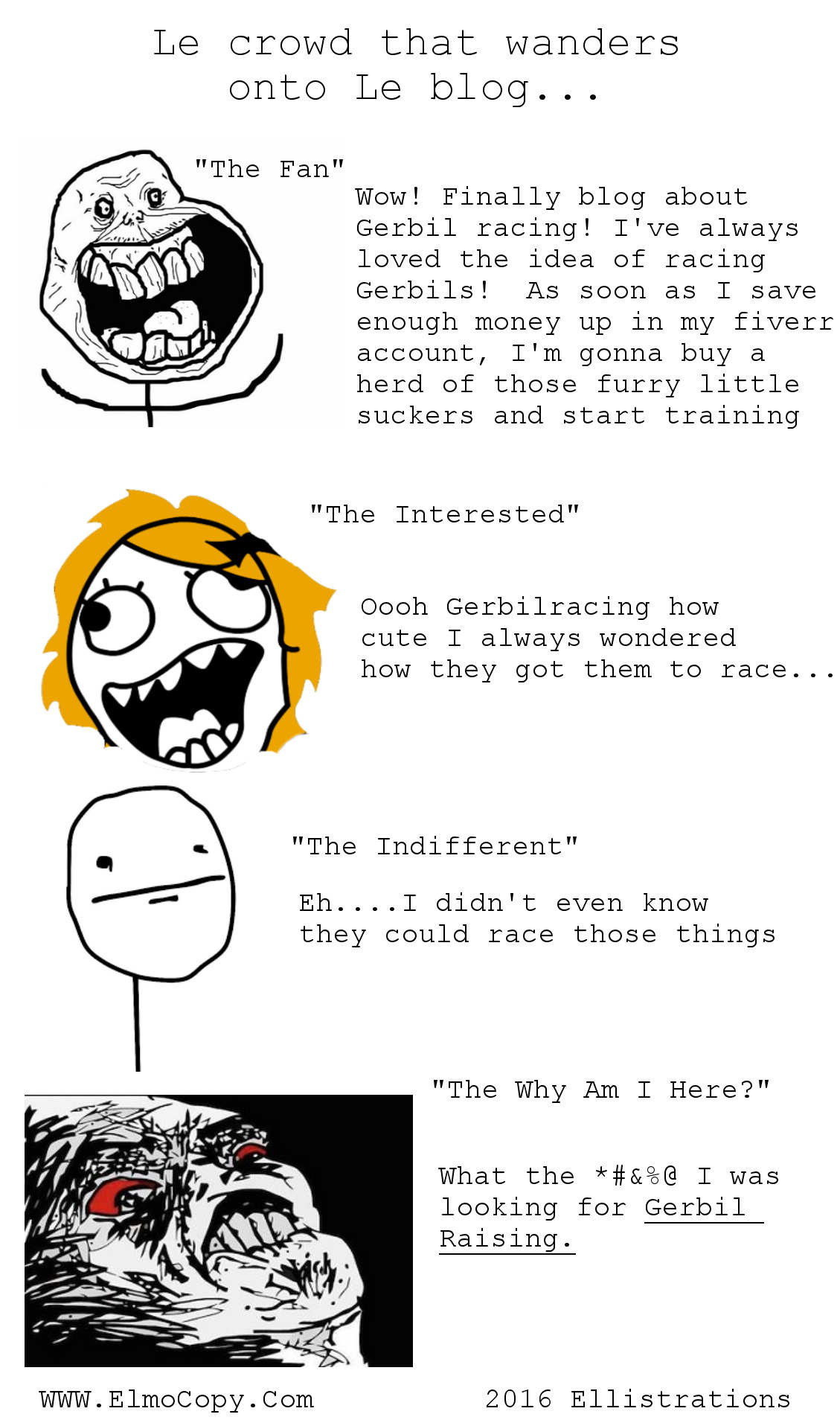This is part two in a series on how to write blog posts using principles copywriters employ.
Once you understand the basic structure of advertising copy and apply some of it to writing blog posts, you’ll be lightyears ahead of most bloggers on the blogosphere.
This post introduces you to a part of ad copy and blog post writing that sometimes gets ignored…subheads. By the time you finish reading this post, you’ll see the value and importance of these units and be able to write them with more care and knowledge.
By the way, if you haven’t read part 1 yet, go back and take a look at it so you won’t be too confused by some of these concepts.
I hope you learn a lot and go out there and kill it!
If you think that writing a great headline is going to pull your reader through an entire post, guess again, dear blogger.
In order to suck the eyeballs onto the page like a black hole, you’re going to need some engaging content.
Content that:
- Resonates with your reader. Hopefully, you have someone that’s looking for content within your chosen niche and is interested in your subject matter
- Offers compelling information that your readers need, desire, or are dying to read
- Has a solution to their problems
- Is so good, and jives with them so well they’ll want to share your content with others
How to Write Blog Posts Using Subheads
Even if you format your blog post so that it’s easy to read, and your content is so good that even researchers are giving it awards ― about 92% of your readers will take a fast way out…
…They will quickly scan your text before reading it to decide if it’s for them.
And if they don’t see anything that’ll assuage their needs in a mere 3 or 4 seconds, they’ll go elsewhere.
Advertising copywriters know all about this. To a person that’s selling using absolutely nothing but words, every single jot and tittle on a page is vital.
In Webster’s dictionary subheads are defined as:
“Subheading: a heading given to a subsection of a piece of writing.”
I’m sure you’ve seen these things; they look like this on a blog post:
Figure 1.
These sections separate different parts of your post and let the reader know what you’re writing about.
However, there is a more important function of subheads that I hinted at before.
Subheads sum up your sections while tantalizing and whetting the appetite of your reader as she scans your post.
The main goal of the subhead is to make sure the reader understands what the whole is about without giving too much away.
Therefore, subheads must hint at the benefits of what you’re telling your audience in a way that makes them want to read the details of what you’ve written.
Ideally, subheads should be written in a way that the reader could scan the entire piece and get a real good idea of what the overall piece is about.
In other words: you could scan the subheads like a micro-post and get the entire idea. (This is an important part of learning how to write blog posts, so don’t skip it.)
However, give them all of the sizzle and none of the steak…You’ll have to read the rest of the piece to get the entire and complete solution to your problem.
Hopefully, you can see why I’ve spent so much time explaining subheads in this lesson on how to write blog posts.
Don’t Ignore These Four Kinds of Readers
In learning how to write blog posts, there are 4 kinds of readers you need to be aware of.
- Readers that are looking for what you’re writing about and will read every single word.
- People that are tire kickers that are kinda –sorta interested and will get what they can by scanning your post.
- People that just happen to look at your post because it was at the top of a search engine results page, or saw it on LinkedIn, or by accident and got interested for a few seconds.
- Readers that have absolutely no reason to read your stuff and get off quickly.
All four readers are important, even #4. I’ll tell you why.
Of course, the first one is very important because they are lusting after what you have to offer. You’ll want to make sure you lead them through your copy so that they will read and take action of some kind before choosing an alternative.
Number 2 is the type the copy really needs to work on because he or she is straddling the fence and might be swayed in your direction.
If your writing is compelling enough and really hammers the benefits and reasons for reading and taking some sort of action, then you might recruit them. Don’t blow these folks off because there’s a bunch of them.
Number 3 is probably the least important because they’re in the wrong place and already know what they want.
It’s probably not you; however, don’t blow them off entirely. They may like what you have to say enough to tell others that are in your market about you.
The people in the number 4 category are important for one reason. If your post or copy is clear enough, then they’ll immediately know it’s not for them.
This means that your copy is perfectly clear about its target market and they can tell immediately that it’s not for them. They aren’t in your target market and have quickly moved on.
So, all four of these types of readers are important and subheads help them scan your entire piece ahead to see if it’s for them.
Now you can see why they are so important and why you must learn to write them in a way that is compelling, tantalizing and exciting.
(Just like the headline, adding a dash of mystery to them helps as well.)
Are You Too Embarrassed To Admit You’ve Done This?
You’re sitting at an auto repair place waiting for them to fix your breaks and you pick up a magazine. As you flip through it, you notice an article on golfing (or baking cookies) catches your eye.
As your eyes dance across the pages, you look at the pictures but after that, your eyes are drawn to the bold lettered sections announcing the different parts of the story.
You start to read one of these sections, but then realize you missed part of the story, so you go back to the first part of it.
After a while, you give up and decide to read the whole dang thing.
Oh snap, you’ve got me!
Another Hidden Purpose For Subheads
Now we can see the primary reasons for writing subheads as we learn how to write blog posts:
- Creating the desire in people that are scanning the piece to want to read the whole thing (or at least most of it).
- Dividing up and announcing the different sections of your piece
There is another good use for subheads that you may not have thought about and that is they serve as great outline devices.
The way that I like to think about writing subheadlines is they will serve as a skeleton of the body of my post. I can sit down and write them out and I’ll have the entire piece outlined and organized… at least for the most part.
If you don’t know exactly what you’re going to write about in an entire post and can’t get all of your subheads down, that’s fine.
You can start writing and the other parts of the post will occur to you as you write your post.
The Stanley Kubrick Blog Post Method
I’m a huge fan of the movie director Stanley Kubrick mainly because of his masterpiece 2001 a Space Odyssey. I don’t know if he ever blogged because he died in 1999 and that’s about the time blogging started to become popular.
I do remember that WordPress had one of its earliest templates named after him, but I’m getting off-topic.
When I was a kid in 1968; I went with some of my friends to see the movie 2001 a Space Odyssey.
The theater was totally empty because nobody went to see it; everyone hated it.
Critics panned the crap out of it, the studio execs that bankrolled it thought it sucked, and the public ignored it.
It is now considered to be one of the 10 most important movies ever made. And the only people that I knew that really saw a value in the movie to my knowledge, was a bunch of junior high kids.
Go figure.
2001 a Space Odyssey was supposed to be about alien life making contact with us for the first time. However, the movie starts in an African veldt bazillion of years ago with nothing but a bunch of apes as characters.
The end of the movie was just as weird, with a psychedelic light show that was very strange.
I walked out of the theater as a young boy thinking, “That’s the coolest thing I have ever seen!”
I didn’t know what I had just seen, but it was awesome!
When you’re young you usually don’t know or understand why some things work or how they work. You just accept them.
I never really thought about why 2001 a Space Odyssey worked until a few years ago. I was watching a documentary on Stanley Kubrick and he had an interesting way of piecing a movie together.
He said, “If you have 5 or 6 non-submersible units, you could piece them together and have an entire movie.”
The “non-submersible units” were actually mini-stories that would each float on their own. They were then connected together as an entire movie or story.
So, I began to think of blog posting and writing advertising copy the same way and how to write blog posts as well.
You could have all of the different sections of the piece and each of them could stand on its own.
In advertising copy it would be a little trickier because these parts would have to be joined seamlessly; one flowing into the other unnoticed.
But you could use subheads to initially get the different sections of your piece fleshed out.
You don’t have to use the Kubrick method, but it helped me think of all the parts of my post easier and now it’s a system I usually work with.
The Victor Schwab Method of Using Subheads
Victor Schwab (1898-1980) was a copywriting genius that many advertising copywriters refer to today. His book, “How to Write a Good Advertisement” rests on the shelves of anyone that is serious about copywriting as a career.
Victor had his own take on how to write subheads for his copy that may help bloggers.
He liked to think of subheads as “rungs on a ladder”. These rungs made it easier and more enticing for the reader to continue on through the piece (or in our case ― blog post).
The weaker and fewer the rungs, the more likely the reader was to stop reading.
Victor also liked to think of these rungs as “booster stations” of power and interest that kept the reader interested and engaged.
His way of looking at subheads was like a chain of these power stations that once arrived at, would make the reader interested enough to move on to the next part.
In Victor’s analysis, subheads served 3 main functions in copy.
- To keep the reader with you for as long as possible. When a person looks at a post, they may feel like it’s a lot to read. Subheads will make a post (especially a long one) look like it can be more digestible.
- Most people’s attention starts to drift. By breaking up the text on a page it will keep them reading.
- To link all of the parts of the copy together. If a person reads your totally awesome headline, they may click a link and leave your page if it looks like they have a ton to read. If they can scan the subheads and those sections look as if they are interesting enough to read, they’ll hold the attention of your reader much easier.
How to Write Riveting Subheads Step by Step
Hopefully, by now you can see the importance of writing subheadlines. They are a crucial part of your reader’s experience and as you learn more about how to write blog posts you should pay close attention to them.
Every writer has to find their own system of writing, so here is a method of writing subheadlines that may help you. As you continue to write, you’ll develop your own system sooner or later.
Step 1: Introduce them early on. Only write a paragraph or two before you put one into your post. If you’re going to outline your post using subheads, then keep in mind you’ll be using them early in your piece.
Step 2: Don’t make all of them declarative in nature. Try to make some of them ask questions. Think of who, what, where, when, and how when you sketch them out. Just like headlines, you want them to create curiosity in a reader.
Step 3: Make sure that they are sequential in character. If you are using these devices as an outlining tool, then you’ll be able to easily see the sequence of the different parts of your post. Make sure that each part moves in a logical progression from one to the next.
Remember, about 90% or so of the people that land on your site will skip out to look at cat videos or read about the latest breast implants the Kardashians have purchased.
Step 4: Make sure they represent and introduce what’s in that section. Don’t just write a post and then drop a bunch of subheads into it. Try to think of what each section of the piece is about.
Step 5: Make sure that these heads link the different parts of your post together seamlessly. You want to use them to lead the reader from one part of your post to the other.
Step 6: Try not to regurgitate the information in the subheadlines. A better idea would be to capsulize the section it precedes. Always move forward with these devices.
Step 7: You need to make your subheads stand out from the rest of the text on the page. You can use bold print with a font that’s larger than the normal text on the page.
You want to hang onto your audience by keeping them interested in your post as well as whetting their appetites for more.
Step 8: Don’t worry too much about how much you are using these headings. You want to use them as much as you need to.
Just like using keywords in a post, you don’t want to overuse subheads, but you don’t have to be paranoid either. Just use them naturally as you need them.
Try This Right after the Headline
Oh, before I forget! There’s one other type of subhead worth mentioning and that’s the one that occurs after the headline.
While most copywriters use this device, most bloggers don’t, I’ve seen Reader’s Digest articles that do.
(Incidentally, Reader’s Digest has some of the best headlines on their articles in the business of writing. I would think that creating a swipe file (collection) of these titles would be very valuable to anyone writing articles and blog posts.)
Credit: Reader’s Digest – (Text deliberately blurred for copyright reasons.)
Right beneath the title, is a subhead that offers another tantalizing piece of information. This usually offers an additional reason or benefit that the reader will get if they read the article or post.
Incidentally, this is another way of reinforcing the headline so people won’t be put off by the long body copy.
Write Out Your Subheads More Than Once
Just like the headline, subheads need to be written with care. You should write and rewrite them several times if necessary. If you can, try to imagine that you are a reader and you have a mild interest in the post.
Using the guidelines we’ve already talked about, try to think of what would keep you on the page reading, especially if you’re just scanning.
Considering your subject matter, what would you like to read in the subheads that would keep your eyes on the page?
Don’t be afraid to add a little “Bazinga” to your subheadlines either. You don’t want them to be boring, but at the same time, you don’t want to mislead your audience either.
Conclusion on How to Write Blog Posts Using Subheads
Just remember the main use of subheadlines is to get your reader to get and stay engaged. You want to ensure that he or she doesn’t leave your post and then forget about you.
The best way to get really good at writing subheadlines is to write a lot of them.
So, go out there and knock them out of the park. If you craft them correctly, subheads will increase your readership.
To your continued success!
Mark “Elmo” Ellis






I came across your Subheads 101 and it was very helpful. I haven’t been using subheads on my blog posts, and I’m going to make a conscious effort to start using them. I just didn’t know exactly why or how I should use them. Once again, thanks for the wonderful post.
Thanks so much Sarah. Please keep coming back for more on these and other subjects related to writing copy.